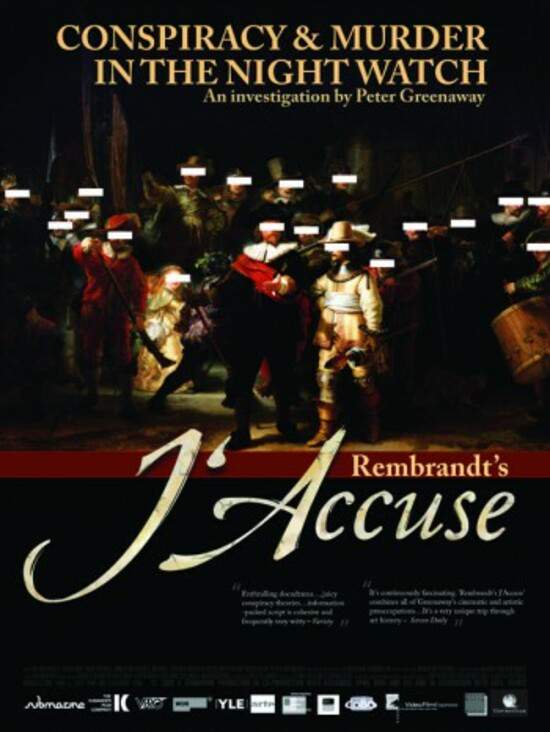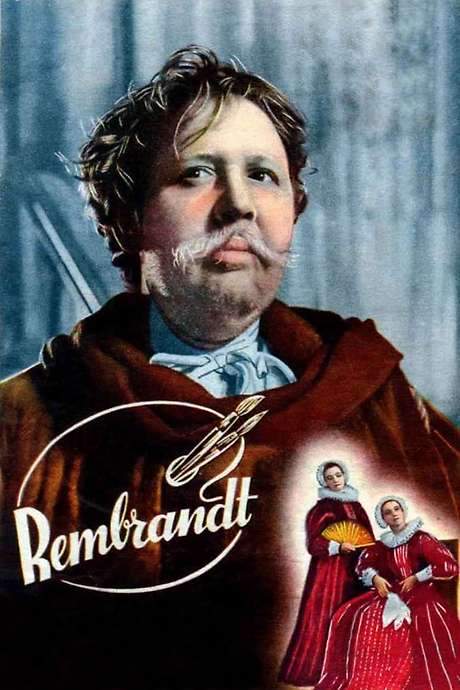The Last Vermeer 2020

Following World War II, a Dutch Resistance fighter and art investigator, Joseph Piller, is tasked with tracking stolen masterpieces. His investigation leads him to Han van Meegeren, a charismatic artist suspected of collaborating with the Nazis by selling them valuable artworks. As Piller explores the situation, he confronts a complex web of deceit and finds himself questioning his own convictions while striving to determine the truth about Van Meegeren’s involvement and clear his name.
Does The Last Vermeer have end credit scenes?
No!
The Last Vermeer does not have end credit scenes. You can leave when the credits roll.
Meet the Full Cast and Actors of The Last Vermeer
Explore the complete cast of The Last Vermeer, including both lead and supporting actors. Learn who plays each character, discover their past roles and achievements, and find out what makes this ensemble cast stand out in the world of film and television.

Guy Pearce
Han Van Meegeren

Adrian Scarborough
Dirk Hannema

Karl Johnson
Bernard Bakker

Vicky Krieps
Minna Holmberg

August Diehl
Alex De Klerks

Roland Møller
Esper Dekker

Andrew Havill
Maarten Wooning

Claes Bang
Joseph Piller

Olivia Grant
Cootje Henning

Daniël Brongers

Truus de Boer

Daan Aufenacker

Dieuwke de Mooij

Kim Chapman

Mark Behan

Matt Beauman-Jones

Paul Bentall
Chief Judge

Peter Dawson

Witold Brzoska
External Links and Streaming Options
Discover where to watch The Last Vermeer online, including streaming platforms, rental options, and official sources. Compare reviews, ratings, and in-depth movie information across sites like IMDb, TMDb, Wikipedia or Rotten Tomatoes.
Ratings and Reviews for The Last Vermeer
See how The Last Vermeer is rated across major platforms like IMDb, Metacritic, and TMDb. Compare audience scores and critic reviews to understand where The Last Vermeer stands among top-rated movies in its genre.

The Movie Echo Score
The Last Vermeer offers a compelling central performance and thoughtful production values balanced against structural and tonal unevenness. Reviews highlight Guy Pearce’s vivid portrayal and the film’s carefully rendered historical setting. The pacing and narrative coherence receive mixed feedback, with some viewers citing a slow build and generic storytelling in parts. While visual design and soundtrack choices divide opinion, the movie maintains enough intrigue to sustain engagement. Overall, The Last Vermeer emerges as a moderately engaging historical drama with notable strengths in performance and design.
The Movie Echo Score Breakdown for The Last Vermeer

Art & Craft
In terms of art and craft, The Last Vermeer demonstrates a strong commitment to period detail and production design. The visual presentation is frequently praised for its carefully constructed settings and layered color palette. Some viewers note occasional awkward lighting and less convincing painting close-ups. Overall, the film’s technical execution lends credibility to its historical context despite occasional inconsistencies in visual cohesion.

Character & Emotion
In character and emotion, the film relies heavily on Guy Pearce’s nuanced performance to anchor the narrative. Critics and audiences alike commend his ability to convey internal conflict through subtle expressions and timing. Supporting roles receive acknowledgment for contributing to the moral complexity, though some note limited chemistry beyond the central dynamic. Overall, the acting ensemble provides a compelling emotional core that sustains viewer interest.

Story & Flow
When it comes to story and flow, responses are mixed regarding narrative structure and pacing. Some praise the unfolding of the true events and the climactic courtroom sequences, while others criticize a sluggish opening hour and predictable developments. The script’s exploration of art authenticity offers thoughtful themes but occasionally drifts into generic territory. Overall, the plot holds sufficient intrigue to engage viewers despite uneven momentum.

Sensory Experience
In terms of sensory experience, the film’s sound and visual style elicit varied responses. The score and sound design support key moments but sometimes signal emotional beats too overtly. Visually, the cinematography captures period detail, yet certain lighting choices and painting recreations draw criticism for feeling artificial. Overall, the audio-visual presentation aligns adequately with the material but lacks consistent cohesion.

Rewatch Factor
When considering rewatch factor, the film’s strengths in performance and thematic questions encourage a second viewing for nuance. Viewers often revisit key confrontations and courtroom scenes to appreciate layered motivations and dialogue. However, slower pacing and predictable elements may lessen the incentive for repeated sessions. Overall, The Last Vermeer offers moderate replay value for those interested in its character studies and historical backdrop.

56
Metascore
7.0
User Score


68%
TOMATOMETER

91%
User Score

6.7 /10
IMDb Rating

65
%
User Score

3.2
From 3 fan ratings

3.00/5
From 8 fan ratings
Take the Ultimate The Last Vermeer Movie Quiz
Challenge your knowledge of The Last Vermeer with this fun and interactive movie quiz. Test yourself on key plot points, iconic characters, hidden details, and memorable moments to see how well you really know the film.
The Last Vermeer Quiz: Test your knowledge about the art world, deception, and wartime intrigue in 'The Last Vermeer'.
What crime was Han van Meegeren initially arrested for?
Forgery
Treason
Selling a painting attributed to Johannes Vermeer to Hermann Goering
Art theft
Show hint
Full Plot Summary and Ending Explained for The Last Vermeer
Read the complete plot summary of The Last Vermeer, including all major events, twists, and the full ending explained in detail. Explore key characters, themes, hidden meanings, and everything you need to understand the story from beginning to end.
In the wake of World War II, Captain Joseph Piller, who played a significant role in the Dutch resistance, is assigned a daunting task: to uncover the shadowy past of the enigmatic artist and dealer, Han van Meegeren. At first glance, Van Meegeren’s arrest seems straightforward; he was accused of selling a painting, once thought to be by the revered Johannes Vermeer, to Hermann Goering, one of Hitler’s most trusted officials. However, as Piller digs deeper, he begins to sense something unsettling about the motivations behind Alex De Klerks’ sudden interest in Van Meegeren’s case.
Piller’s growing apprehensions prove to be justified, as he uncovers a tangled web of deception. His interrogations with Van Meegeren reveal that the artist has been living a dual existence—one as a gifted creator and the other as a shrewd manipulator. Initially facing harsh criticism for his art, Van Meegeren’s fortunes took a turn when he fabricated ‘discoveries’ of lost Vermeer works, using these to fund an extravagant lifestyle. His collaboration with the Nazis was merely a clever ploy to further his own agenda while maintaining an illusion of respectability.
As Piller’s skepticism regarding Van Meegeren’s culpability mounts, so too do the stakes. With Allied forces set to depart from the Netherlands, he realizes that he is powerless to stop De Klerks from seizing custody of Van Meegeren, who now faces a death sentence for his involvement in the looting of Dutch cultural artifacts during the war. The once peaceful landscape of post-war Europe is marred by the dark realities hidden just beneath the surface. Captain Piller’s inquiry into Han van Meegeren’s background starkly illustrates the catastrophic aftermath of conflict and the depths of human betrayal.
Amid the exhausting rhythm of Piller’s routine, his former secretary, Minna, bursts into his modest home with palpable urgency. Her startling revelation—a Vermeer portrait allegedly uncovered by Han bears an uncanny likeness to Cootje, the woman who has enchanted Piller’s heart—sends shockwaves through his resolve. During a moment of reflection, Piller revisits the abandoned safehouse, discovering Han’s unfinished canvas, which intriguingly resembles the artwork that was seized from the Nazis. Convinced of Han’s fidelity to the truth, Piller resolves to champion his defense in court, only to unravel a convoluted scheme involving bakelite and cleverly heated canvas—a ruse devised by Han to lend his works an air of authenticity.
In the courtroom, Han adamantly proclaims his innocence, noting that he had, in fact, immortalized Piller on his own canvas. Yet, the prosecution, reinforced by art critics who once endorsed the paintings’ legitimacy, effectively convinces the judges to impose a harsh sentence on Han. As the verdict is delivered, Piller instigates a diversion, aided by Esper Dekker, which gives him the opportunity to secretly tarnish one of the paintings using acid. The unexpected unveiling of Han’s signature sends ripples through the courtroom, leading to an immediate overturn of his verdict, culminating in a hero’s reception from the public.
In the following days, De Klerks confronts Piller, presenting a book retrieved from the safehouse—a book dedicated to Adolf Hitler, authored by none other than Han himself. As the web of truth begins to unfold, Piller confronts Han at his doorstep, receiving nothing but scorn and dismissal in return. Disenchanted, Piller walks away, casting the damning book into the flames in an act of symbolic purification, emphasizing the lessons learned amidst the storm of lies and revelation.
Uncover the Details: Timeline, Characters, Themes, and Beyond!

Coming soon on iOS and Android
The Plot Explained Mobile App
From blockbusters to hidden gems — dive into movie stories anytime, anywhere. Save your favorites, discover plots faster, and never miss a twist again.
Sign up to be the first to know when we launch. Your email stays private — always.
Watch Trailers, Clips & Behind-the-Scenes for The Last Vermeer
Watch official trailers, exclusive clips, cast interviews, and behind-the-scenes footage from The Last Vermeer. Dive deeper into the making of the film, its standout moments, and key production insights.
Cars Featured in The Last Vermeer
Explore all cars featured in The Last Vermeer, including their makes, models, scenes they appear in, and their significance to the plot. A must-read for car enthusiasts and movie buffs alike.
The Last Vermeer Themes and Keywords
Discover the central themes, ideas, and keywords that define the movie’s story, tone, and message. Analyze the film’s deeper meanings, genre influences, and recurring concepts.
The Last Vermeer Other Names and Titles
Explore the various alternative titles, translations, and other names used for The Last Vermeer across different regions and languages. Understand how the film is marketed and recognized worldwide.
Similar Movies To The Last Vermeer You Should Know About
Browse a curated list of movies similar in genre, tone, characters, or story structure. Discover new titles like the one you're watching, perfect for fans of related plots, vibes, or cinematic styles.
Quick Links: Summary, Cast, Ratings, More

What's After the Movie?
Not sure whether to stay after the credits? Find out!
Explore Our Movie Platform
New Movie Releases (2025)
Famous Movie Actors
Top Film Production Studios
Movie Plot Summaries & Endings
Major Movie Awards & Winners
Best Concert Films & Music Documentaries
Movie Collections and Curated Lists
© 2025 What's After the Movie. All rights reserved.


































